North America is home to many types of wild animals, including big cats. The term big cats refers to large, powerful members of the feline family. This 2025 update of big cats in North America includes the mountain lion, Canada lynx, bobcat, and jaguar.
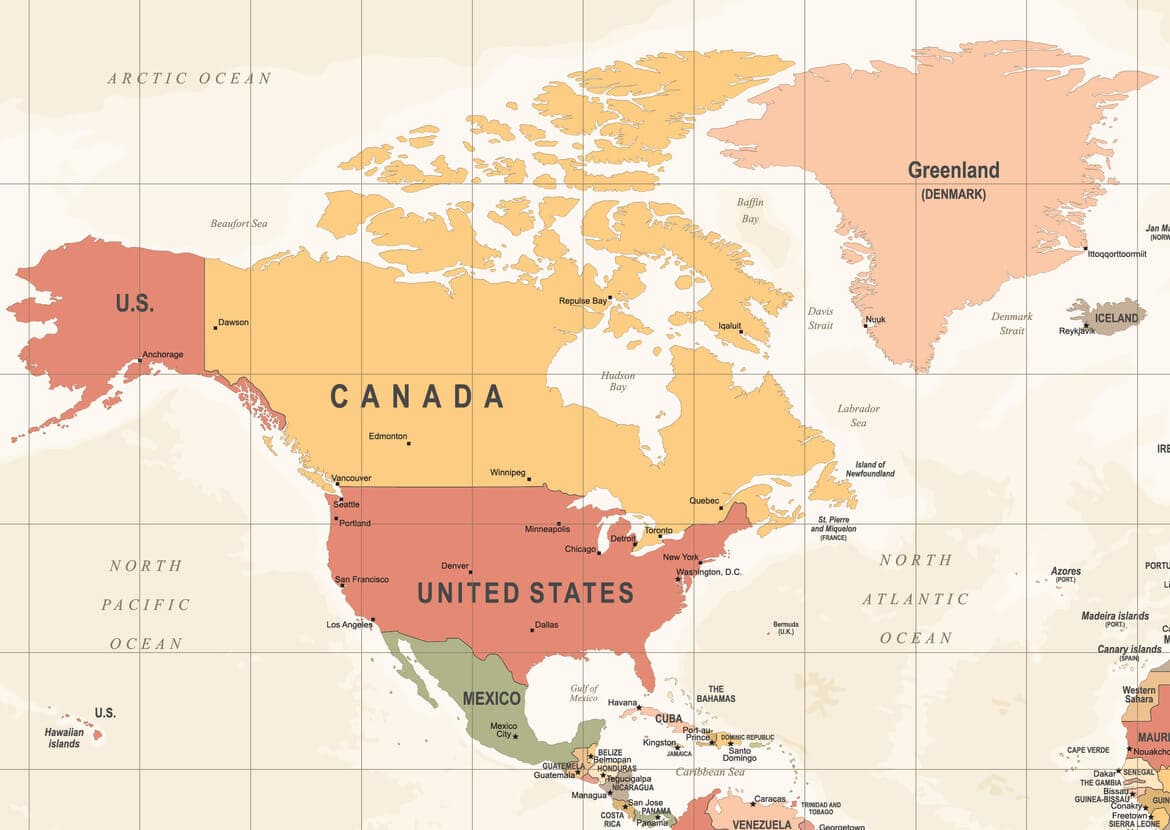
Map of North America.
Mountain Lions
Puma concolor
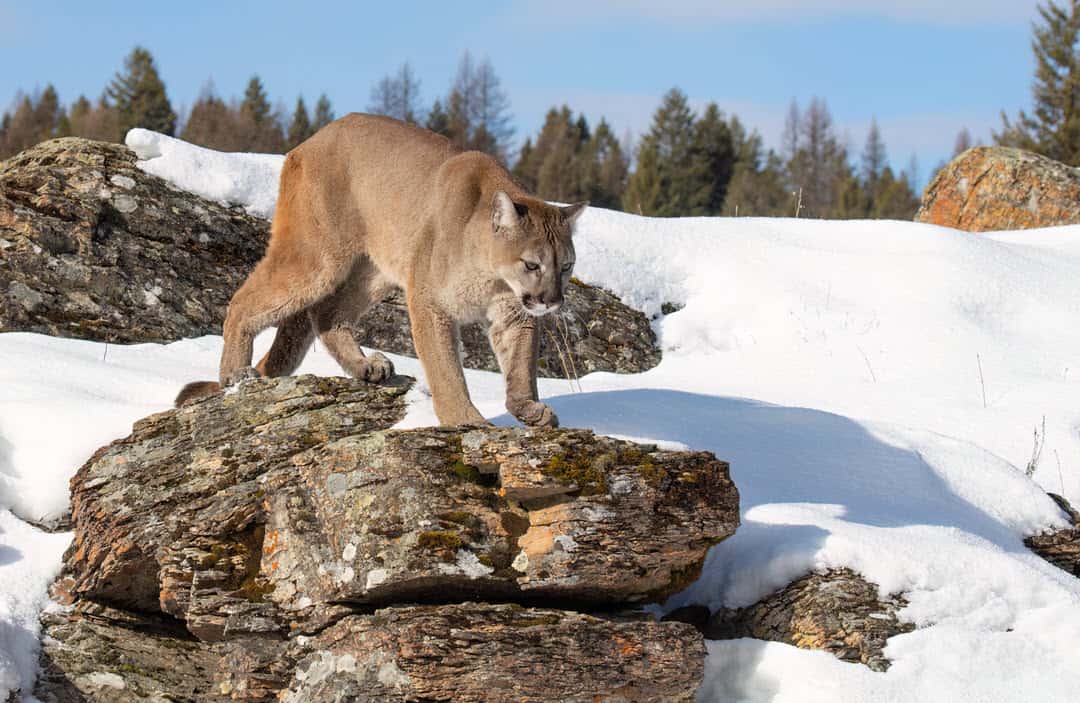
Also known as cougars, pumas, or panthers, mountain lions are North America’s most widespread big cats. Found across the United States, Canada, and parts of Mexico, they can survive in many different environments, from dense forests to arid deserts.
The mountain lion has a big range. In the past it spanned from Canada’s Yukon Territory to the southern Andes in South America. Today, you can find them in the western United States and Canada, with some isolated population (Florida panthers) in the southeastern U.S.
Additional mountain lion information:
- Mountain lions are solitary creatures
- They primarily prey on deer and smaller mammals.
- Their muscular build allows them to leap up to 15 feet vertically and 40 feet horizontally, which helps them ambush unsuspecting prey.
- Instead of roaring, they communicate with purrs, hisses, and screams that you can hear throughout their territory.
- They play an important role in controlling prey populations, which helps maintain healthy ecosystems.
- Due to their broad distribution and elusive nature, they are usually spotted in rural or wilderness areas rather than urban centers.
- They thrive in diverse habitats, including forests, mountains, and deserts.
- Mountain lions face threats from habitat fragmentation due to urban development, roads, and agriculture.
Mountain Lion Update
According to the Mountain Lion Foundation, several new laws were implemented in 2024 to help protect mountain lions:
- California Room to Roam Act (AB 1889) – requires local government to consider and implement measures to improve wildlife connectivity in land-use planning.
- California Poison-Free Wildlife Act (AB2552) – an addition to previous legislation banning the use of rat poison.
- New regulations regarding the hunting and trapping of mountain lions in Texas.
Construction on the Wallis Annenberg Wildlife Crossing over California’s Highway 101 is also ongoing, and a petition to reform cougar and bear hunting in Washington has been approved.
Canada Lynx
Lynx canadensis
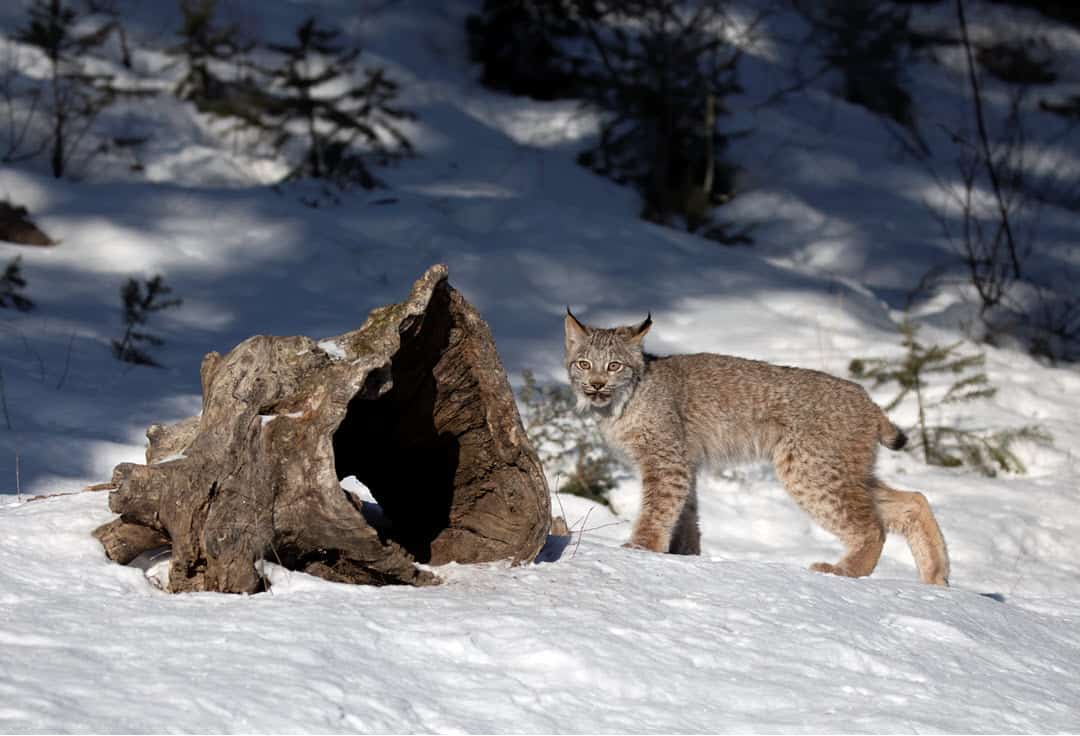
The Canada lynx is a medium-sized wild cat found in the colder regions of North America, including Canada, Alaska, and parts of the northern United States. It is closely related to the bobcat but is larger and adapted to life in colder climates. The Canada lynx is usually found in boreal forests and mountainous regions.
The Canada lynx’s life is closely tied to the snowshoe hare, its primary prey. When hare numbers increase, lynx populations rise as well. When hare populations decline, so does the lynx population.
Canada Lynx Update
At the beginning of 2025, the US Fish and Wildlife Service finalized a Canada lynx recovery plan. The purpose of the plan is to increase protections for this threatened species. It includes a new habitat proposal of around 19,000 square miles across Colorado, Idaho, Montana, New Mexico, Washington, and Wyoming.
According to a press release sent out in late 2024, “The final recovery plan for the Canada lynx sets clear strategies and measurable goals to support long-term conservation throughout its contiguous U.S. range. The Service collaborated closely with state, Tribal and federal partners to develop science-based conservation measures aimed at reducing risks to Canada lynx. The main threats include the impacts of global climate warming on boreal forest habitats and the species depending on them, including lynx and snowshoe hares.”
Bobcats
Lynx rufus
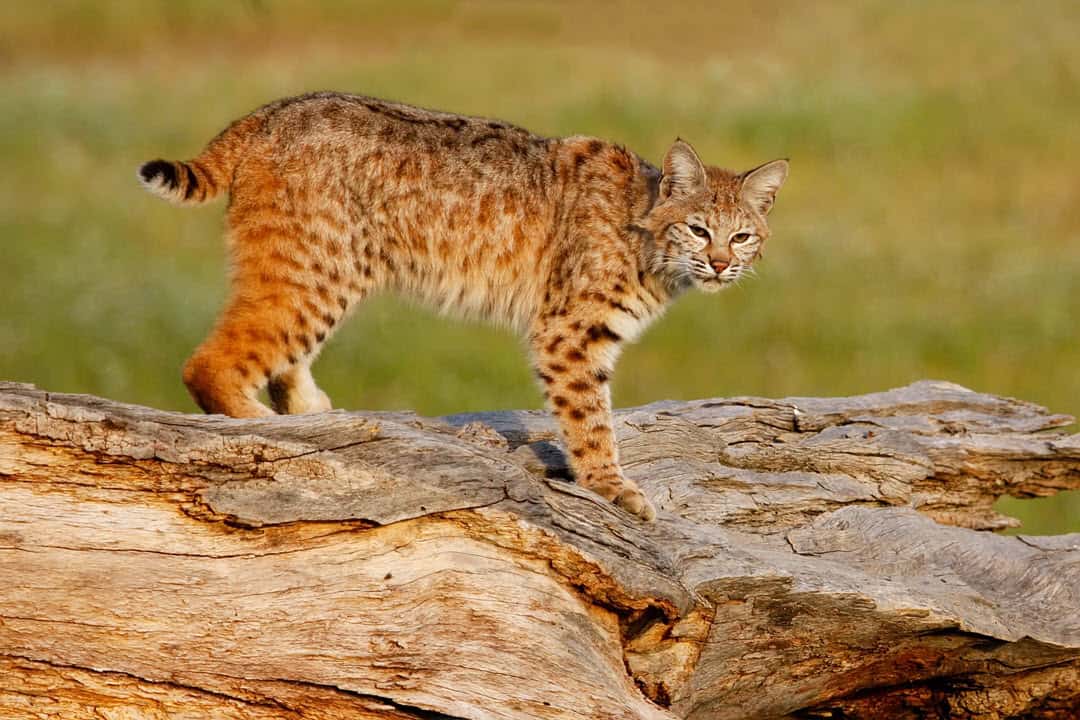
Bobcats are the smaller cousins of the mountain lion. They can be found throughout the United States, southern Canada, and parts of Mexico, usually in forests and grasslands, but somtimes even suburban areas.
Despite their smaller size (weighing between 15 and 30 pounds), bobcats are fierce predators. Bobcats prey on rabbits, squirrels, and birds. Their spotted coats provide excellent camouflage. They also have sharp senses, which help them find prey in different terrains.
Bobcats are skilled climbers, and have the ability to adapt to new environments. Trail cameras frequently capture them wandering around near cities.
There are several groups and projects involved in bobcat conservation, which typically involves promoting and enacting better conservation legislation, monitoring bobcat populations and developing wildlife crossings to reduce vehicle collisions.
Bobcat Conservation Update
From 2021 to 2022, the California Department of Fish and Wildlife conducted a statewid population assessment of bobcats. The data form the project, known as the California Statewide Bobcat Population Monitoring Project, is being used to create a statewide bobcat conservation and management plan. The plan, as of January 2025, is currently under review.
Jaguars
Panthera onca
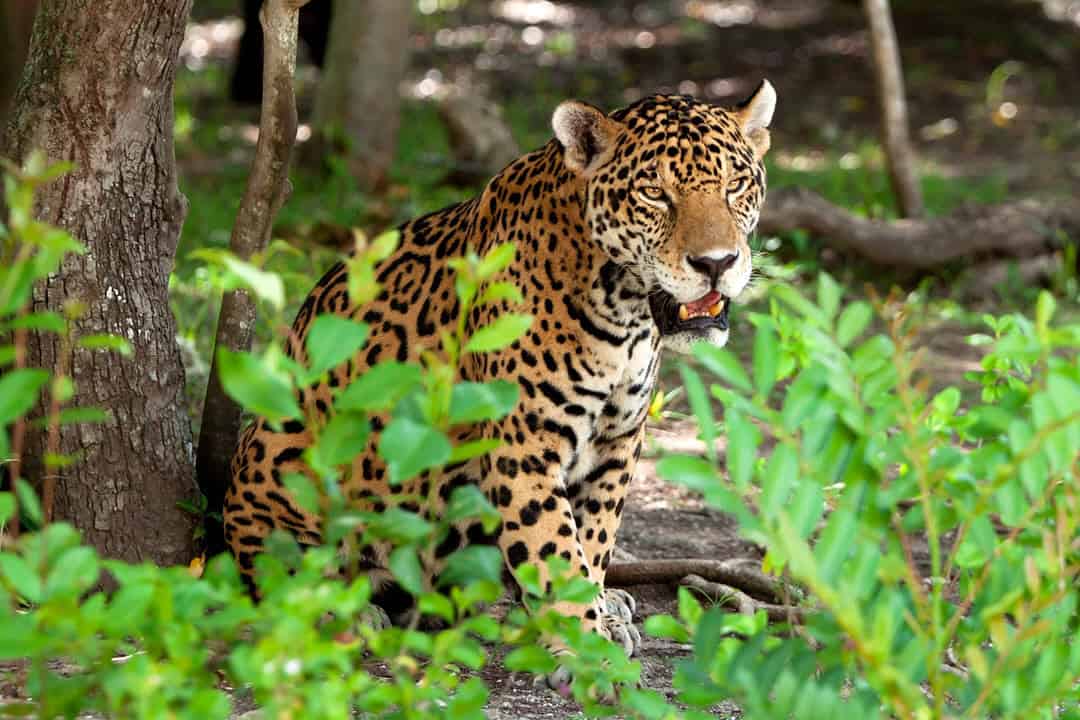
“The jaguar is North America’s third-largest big cat. They are typically found in the rainforests of Central and South America, but in recent years, you can sometimes see them in the southern United States, particularly in Arizona and New Mexico.
Jaguars weigh up to 250 pounds and have a bite strong enough to crush skulls and turtle shells. They hunt a wide range of prey, including deer, peccaries, fish and caimans.In the U.S., when there are sightings of a jaguar, it is typically a male crossing the border, captured by remote cameras in rugged borderlands.
Jaguar Conservation Update
Several organizations are involved in North American jaguar conservation, including:
- Northern Jaguar Project – Operates in Sonora, Mexico by the the U.S. board. Its purpose is to project the northernmost jaguar population through the 56,000-acre Northern Jaguar Reserve.
- ProJaguAR (Mexico, Pronatura Noroeste) – Focuses on conserving jaguars in northwestern Mexico (Sonora and Sinaloa) through habitat protection and community engagement.
- Borderlands Jaguar Detection Project (United States) – Managed by the University of Arizona’s Wild Cat Research and Conservation Center. The project monitors jaguars in southern Arizona and New Mexico.
- Jaguar Guardians Program (Mexico, Wildlife Conservation Society) – A program in Mexico’s Yucatan Peninsula and Chiapas that focuses on relatively stable and healthy jaguar populations like the Calakmul Biosphere Reserve (Yucatan Peninsula, Mexico).
- Selva Maya Jaguar Conservation Project (Mexico, WWF) – Part of World Wildlife Federation’s Jaguar 2030 Strategy that targets the Selva Maya, North America’s largest tropical rainforest, which spans from Mexico to Belize and Guatemala.
- Jaguar Conservation in the Chihuahuan Desert (Mexico, Naturalia) – Naturalia is a Mexican conservation organization that works in the Chihuahuan Desert ecoregion to project jaugars in arid landscapes.
The Future of North American Big Cats
North America’s big cats play vital roles in their ecosystems. As apex or mid-tier predators, they regulate prey populations, maintaining balance in food webs. Mountain lions control deer numbers, preventing overgrazing, while lynx and bobcats keep rodent and hare populations in check. Jaguars, though rare, influence biodiversity in their southern habitats.
Yet, these cats face significant challenges. Habitat loss from urbanization, agriculture, and infrastructure development fragments their ranges, isolating populations and reducing genetic diversity. Changes in the climate impact prey availability and habitat conditions, particularly for the Canada lynx. Human-wildlife conflict, including road mortality and hunting, adds further pressure. Conservation strategies—like protected areas, wildlife crossings, and public education—are critical to their survival.

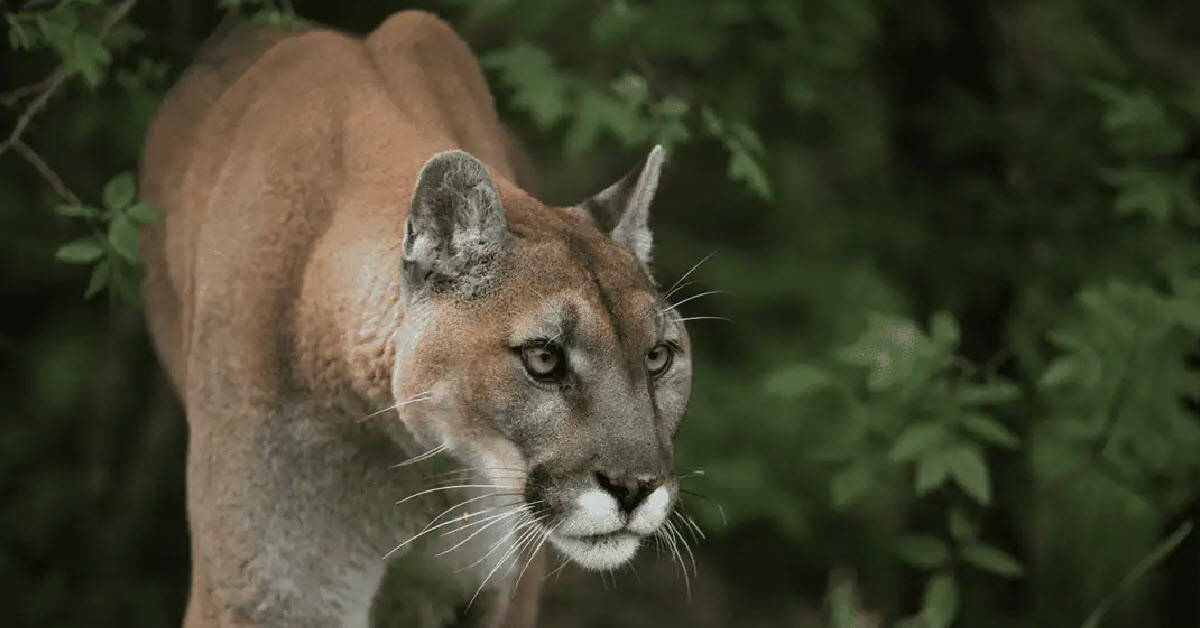
0 Comments